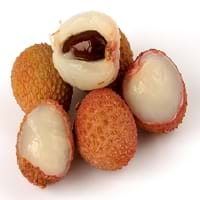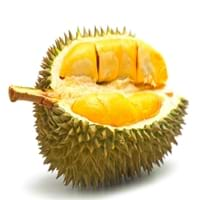Health Benefits
Cancer prevention, Cures gastro-intestinal troubles, Heart care, Muscle pain relief, Prevents blindness from diabetes
Anti depressant, Boosts immune system, Cancer prevention, Heart care, Reduces stress
General Benefits
Boosts immune system, Digestive aid, Fights against infections, Helps in weight loss, Maintains healthy cholesterol level, Strengthens bones
Anti oxidant properties, Anti-inflammatory properties, Boosts immune system, Controls blood pressure, Controls blood sugar levels, Digestive aid, Flu treatment, Strengthens bones
Skin Benefits
Anti-aging benefits, Skin rejuvenation
Anti-aging benefits, Brightens and lightens complexion
Hair Benefits
Promotes longer and healthier hair, Protects hair
Promotes longer and healthier hair, Protects hair
Allergy Symptoms
Coughing, Diarrhea, Headaches, Hives, Itching, Labored Breathing, Nausea, Runny nose, Swelling of mouth, tongue or lips, Vomiting, Watery eyes
Diarrhea, Headaches, Hives, Nasal congestion, Red rash, Runny nose, Vomiting
Side Effects
May cause abdominal pain, Diarrhoea, Mouth irritation, Throat irritation, Weight gain
Affects blood glucose levels, Nausea, Stomach pain
Best Time to Eat
As a snack in the late afternoon, Don't consume at night and before bed, Eat the fresh ones, avoid mixing with any other foods, don't eat after meal., Morning time (before lunch), Strictly avoid empty stomach
Along with meal, As a snack in the late afternoon, Don't consume at night and before bed, Morning time (before lunch)
Vitamin B5 (Pantothenic Acid)
Vitamin C (Ascorbic Acid)
Vitamin E (Tocopherole)
Not Available
Vitamin K (Phyllochinone)
Not Available
Lutein+Zeaxanthin
Not Available
Calories in Fresh Fruit with Peel
Not Available
Not Available
Calories in Fresh Fruit without Peel
Calories in Canned Form
Not Available
Calories in Pie
Not Available
Type
Tree fruit, Tropical
Tree fruit, Tropical
Season
Spring, Summer
Monsoon
Varieties
Emperor fruit, Mauritiu, Sweet Heart, Brewster, Haak Yip and Bengal
D24, D99 (Gob kecil), D123 (Chanee), D145 (Beserah), D158 (Gan Yau), D159 (Monthong), D169 (Tok Litok), D188, D189, D190, D163 (Hor Lor) and D164 (Ang Bak)
Color
Bright red, Pink red
Green
Inside Color
Greyish-white
Yellow
Taste
Crunchy, Juicy, Sweet
Creamy, Sweet
Origin
China, Indonesia, Philippines, Vietnam
South-Eastern Asia
Grows on
Trees
Not Available
Soil Type
Alluvial, Loam, Well-drained
Clay
Climatic Conditions
Absence of strong wind, Cold, Dry, Without frosts
Hot, Humid
Facts about
- The seed of Lychee fruit is toxic & can adversely affect the digestive system.
- This fruit gives a smoky flavor when eaten dried.
- This fruit is a symbol of love and romance in China.
- 1 kg of durian contains 1350 calories which may cause weight gain.
- It may have a hyperthermic effect on the body, making you feel warmer.
- Study shows that durian has an ability to reduce infertility in men & women.
Top Producer
China
Thailand
Other Countries
Australia, India, South Africa, Thailand, United States of America
Indonesia, Malaysia, Philippines
Top Importer
Hong Kong
China
Top Exporter
China
Thailand
Botanical Name
Litchi chinensis
Durio zibethinus
Synonym
Nephelium litchi
Lahia Hassk
Subkingdom
Tracheobionta
Tracheobionta
Division
Magnoliophyta
Magnoliophyta
Class
Magnoliopsida
Magnoliopsida
Subclass
Rosidae
Dillenhidae
Order
Sapindales
Malvales
Family
Sapindaceae
Malvaceae
Species
L. chinensis
D. zibethinus
Generic Group
Soapberry
Not Available
Difference Between Lychee and Durian
We might think that Lychee and Durian are similar with respect to nutritional value and health benefits. But the nutrient content of both fruits is different. Lychee and Durian Facts such as their taste, shape, color, and size are also distinct. The difference between Lychee and Durian is explained here.
The amount of calories in 100 gm of fresh Lychee and Durian with peel is Not Available and Not Available and the amount of calories without peel is 66.00 kcal and 147.00 kcal respectively. Thus, Lychee and Durian belong to Low Calorie Fruits and High Calorie Fruits category.These fruits might or might not differ with respect to their scientific classification. The order of Lychee and Durian is Sapindales and Malvales respectively. Lychee belongs to Sapindaceae family and Durian belongs to Malvaceae family. Lychee belongs to Litchi genus of L. chinensis species and Durian belongs to Durio genus of D. zibethinus species. Beings plants, both fruits belong to Plantae Kingdom.









